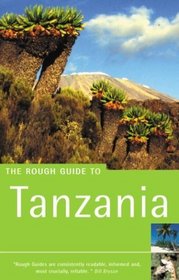Search -
Rough Guide to Tanzania 1 (Rough Guide Travel Guides)
Rough Guide to Tanzania 1 - Rough Guide Travel Guides
Author:
INTRODUCTION Lying just south of the equator, Tanzania is East Africa’s largest country, and an immensely rewarding place to visit. Filling the brochures are several world-famous attractions: the plains of the Serengeti, Ngorongoro Crater, snow-capped Mount Kilimanjaro (Africa’s highest mountain) and Zanzibar, with its idyllic palm-fr... more »
Author:
INTRODUCTION Lying just south of the equator, Tanzania is East Africa’s largest country, and an immensely rewarding place to visit. Filling the brochures are several world-famous attractions: the plains of the Serengeti, Ngorongoro Crater, snow-capped Mount Kilimanjaro (Africa’s highest mountain) and Zanzibar, with its idyllic palm-fr... more »
ISBN-13: 9781858287836
ISBN-10: 1858287839
Publication Date: 2/24/2003
Pages: 512
Rating: ?
ISBN-10: 1858287839
Publication Date: 2/24/2003
Pages: 512
Rating: ?
0 stars, based on 0 rating
Genres:
- History >> Africa >> Tanzania
- Travel >> Africa >> General
- Travel >> Guidebook Series >> Rough Guide




